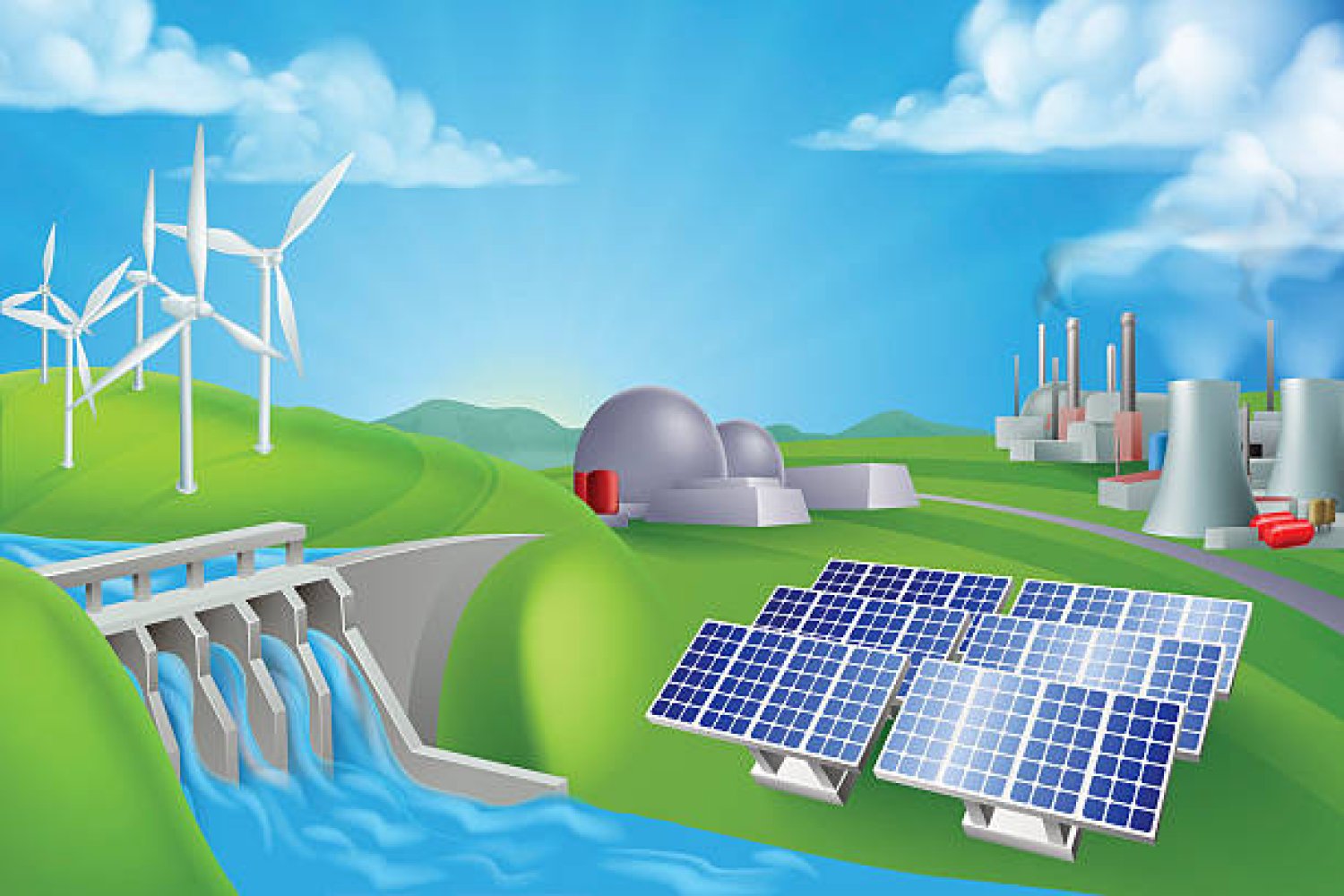Are we there yet? Everything you need to know about the electric vehicle revolution in Australia – The Guardian

Report on Australia’s Electric Vehicle Transition and Alignment with Sustainable Development Goals
Executive Summary
This report outlines the current state and future trajectory of Electric Vehicle (EV) adoption in Australia, contextualised within the framework of the United Nations Sustainable Development Goals (SDGs). The transition to EVs is a critical component of Australia’s strategy to achieve its emissions reduction targets, directly supporting SDG 13 (Climate Action). The expansion of the EV market, development of supporting infrastructure, and promotion of sustainable consumption patterns are also integral to achieving SDG 7 (Affordable and Clean Energy), SDG 9 (Industry, Innovation, and Infrastructure), SDG 11 (Sustainable Cities and Communities), and SDG 12 (Responsible Consumption and Production).
Progress Towards National Climate and Energy Targets (SDG 13 & SDG 7)
Australia’s commitment to reducing greenhouse gas emissions necessitates a significant transformation in the transport sector, which is projected to become the nation’s largest source of emissions. The Climate Change Authority (CCA) has established clear targets for EV adoption as a primary lever for climate action.
Official Projections and Current Status
- 2030 Target: To meet emissions reduction goals, the CCA advises that 50% of all new light vehicle sales over the next decade must be battery electric vehicles.
- 2035 Target: It is projected that EV sales will need to constitute 85% of the market by 2035.
- Current Adoption Rate: In the second quarter of 2025, battery EVs accounted for 9% of new vehicle sales, a substantial increase from 1% during the same period in 2022, indicating strong momentum towards achieving SDG 7 by transitioning transport to clean energy sources.
Market Innovation and Infrastructure Development (SDG 9 & SDG 12)
The growth of the Australian EV market is being driven by increased model availability, competitive pricing, and the expansion of charging infrastructure, reflecting progress in SDG 9. This evolution is also fostering more sustainable consumption choices for consumers, in line with SDG 12.
Vehicle Availability and Consumer Choice
The Australian market now offers over 120 EV models, with significant growth in consumer choice and brand diversity.
- Popular Models (2024): Tesla Model Y, Tesla Model 3, BYD Seal, and BYD Atto.
- Emerging Brands: Geely (parent of Volvo and Polestar) and Zeekr are rapidly gaining market share with competitive offerings like the EX5 SUV.
- Market Gaps and Growth Areas: While medium SUVs are well-represented, there is a need for more compact cars under $40,000 and fully electric utes. The market for electric vans suitable for commercial use has improved significantly.
Development of a Secondhand Market
A thriving secondhand EV market is emerging, which is crucial for promoting a circular economy and making sustainable technology more accessible, thereby supporting SDG 12.
- Sales Volume: 16,000 secondhand EVs were sold in the first half of 2025, a fourfold increase from the same period in 2023.
- Pricing: The influx of new, cheaper models has led to a drop in secondhand prices, with year-old EVs selling at a 20% discount compared to new vehicles.
- Future Growth: The secondhand market is expected to expand as fleet vehicles from businesses and governments are sold after approximately five years of use.
Infrastructure for Sustainable Cities and Communities (SDG 11 & SDG 9)
The development of a robust and accessible charging network is fundamental to overcoming “range anxiety” and enabling the widespread adoption of EVs, contributing directly to the creation of sustainable infrastructure (SDG 9) and more sustainable cities (SDG 11).
Public Charging Network Status
- Current Infrastructure: Over 1,000 fast or ultra-fast public charging locations are operational across Australia.
- Government Investment: The federal government has pledged an additional $40 million to expand this network.
- International Comparison: In 2024, Australia had 22 public charging stations per 1,000 EVs, an increase from 15 in the previous year but still below the global average of 90.
- Urban and Regional Development: State governments are actively supporting infrastructure growth, such as NSW funding for installations in apartment buildings, to increase charging density in urban areas and support sustainable communities.
A Holistic Strategy for Sustainable Transport (SDG 11 & SDG 13)
While EV adoption is a cornerstone of decarbonisation, achieving long-term sustainability in transport requires a multi-faceted approach that extends beyond replacing internal combustion engine vehicles. This comprehensive strategy is essential for meeting the goals of SDG 11 and SDG 13.
Beyond Passenger Vehicles
Experts and government roadmaps emphasize that a sole focus on EVs is insufficient. A diversified approach is necessary to address emissions from the entire transport sector.
- Promoting Active and Public Transport: Investment in infrastructure for walking, cycling, and mass transit systems like buses and trains is critical.
- Electrifying Other Transport Modes: Efforts must be directed towards electrifying motorbikes, scooters, buses, trucks, and trains.
- Improving Freight Logistics: Shifting more freight from road to rail is a key priority for reducing emissions.
By adopting a portfolio of clean transport solutions, Australia can effectively reduce the environmental impact of its transport sector, reduce urban congestion, and build more sustainable, resilient communities for the future.
Analysis of Sustainable Development Goals in the Article
1. Which SDGs are addressed or connected to the issues highlighted in the article?
The article on the electric vehicle revolution in Australia addresses several Sustainable Development Goals (SDGs) by focusing on the transition to cleaner transportation to combat climate change, the development of necessary infrastructure, and the creation of sustainable urban environments.
- SDG 13: Climate Action: This is the most prominent SDG in the article. The entire premise of promoting electric vehicles (EVs) is to meet “emissions reduction targets.” The article states that transport is projected to become Australia’s “largest emitting sector” and is the “only sector where emissions are increasing,” directly linking the EV transition to the urgent need to take action to combat climate change.
- SDG 7: Affordable and Clean Energy: The shift from fossil fuel-powered vehicles to electric ones is a fundamental change in energy consumption for transport. While the article doesn’t detail the source of the electricity, the context of reducing emissions implies a move towards cleaner energy. The focus on building a robust charging network is essential for making this clean energy accessible for transportation.
- SDG 9: Industry, Innovation, and Infrastructure: The article extensively discusses the infrastructure required to support the EV transition, such as the rollout of public charging stations. It highlights the innovation in the automotive industry with “a vast array of models” becoming available. This aligns with building resilient infrastructure and promoting clean and environmentally sound technologies and industrial processes.
- SDG 11: Sustainable Cities and Communities: The article touches upon creating sustainable transport systems beyond private cars. It mentions that EVs are “only part of the solution” and highlights the need for “investment in infrastructure to support walking, cycling and public transport.” This directly relates to providing access to safe, affordable, and sustainable transport systems for all, a key component of sustainable cities.
2. What specific targets under those SDGs can be identified based on the article’s content?
Based on the issues discussed, several specific SDG targets can be identified:
-
Target 13.2: Integrate climate change measures into national policies, strategies and planning.
- The article directly references this target by discussing the Climate Change Authority’s (CCA) advice and the government’s emissions reduction targets for the transport sector. The suggestion that “half of all the light vehicles sold in Australia over the next decade would have to be EVs to meet emissions reduction targets” is a clear example of integrating climate measures into national transport strategy.
-
Target 9.4: By 2030, upgrade infrastructure and retrofit industries to make them sustainable, with increased resource-use efficiency and greater adoption of clean and environmentally sound technologies and processes.
- This target is reflected in the discussion about the automotive industry’s shift to producing EVs and the need to build out the supporting infrastructure. The article’s focus on the increasing availability of EV models and the expansion of the charging network (“More than 1,000 places in Australia already provide fast or ultra-fast public charging”) demonstrates the adoption of cleaner technology.
-
Target 11.2: By 2030, provide access to safe, affordable, accessible and sustainable transport systems for all, improving road safety, notably by expanding public transport, with special attention to the needs of those in vulnerable situations, women, children, persons with disabilities and older persons.
- The article points to this target in its concluding section, where experts argue that simply swapping petrol cars for EVs is insufficient. The call to “massively increase non-car transport options” and invest in “walking, cycling and public transport as well as freight and fast rail” directly aligns with the goal of creating comprehensive and sustainable transport systems.
-
Target 7.2: By 2030, increase substantially the share of renewable energy in the global energy mix.
- While the article focuses on the vehicles themselves, the transition to EVs is an implicit move towards electrifying the transport sector. This shift is a key strategy for increasing the share of clean energy in total final energy consumption, assuming the electricity is generated from renewable sources, which is the underlying goal of climate action policies.
3. Are there any indicators mentioned or implied in the article that can be used to measure progress towards the identified targets?
Yes, the article provides several quantitative and qualitative indicators that can be used to measure progress:
-
Indicator for Targets 13.2 and 9.4: Percentage of new vehicle sales that are EVs.
- The article provides specific data points: “battery EVs made up 9% of new sales” in the most recent quarter, a significant increase from “1% in the same period in 2022.” It also mentions future goals, such as 50% of sales over the next decade and 85% of sales by 2035.
-
Indicator for Target 9.4: Density and availability of charging infrastructure.
- The article provides metrics such as the number of public charging stations per 1,000 EVs (“22 public charging stations for every 1,000 electric cars” in 2024, up from 15 the previous year). It also mentions the total number of fast-charging locations (“More than 1,000 places”) and the density in urban areas (“Sydney’s inner west already has nearly four charging stations per square kilometre”).
-
Indicator for Target 13.2: Greenhouse gas emissions from the transport sector.
- The article implies this indicator by stating that transport is the “only sector where emissions are increasing” and is on track to become the “largest emitting sector.” Tracking this figure would be the ultimate measure of the success of policies promoting EVs.
-
Indicator for Target 11.2: Investment in and use of public and active transport.
- While not providing a current statistic, the article identifies this as a crucial measure of progress. The government’s “transport roadmap” includes “investment in infrastructure to support walking, cycling and public transport,” suggesting that tracking this investment and the subsequent modal shift away from private cars is a key indicator.
4. SDGs, Targets, and Indicators Table
| SDGs | Targets | Indicators |
|---|---|---|
| SDG 13: Climate Action | 13.2: Integrate climate change measures into national policies, strategies and planning. |
|
| SDG 9: Industry, Innovation, and Infrastructure | 9.4: Upgrade infrastructure and retrofit industries to make them sustainable… with greater adoption of clean and environmentally sound technologies. |
|
| SDG 11: Sustainable Cities and Communities | 11.2: Provide access to safe, affordable, accessible and sustainable transport systems for all… by expanding public transport. |
|
| SDG 7: Affordable and Clean Energy | 7.2: Increase substantially the share of renewable energy in the global energy mix. |
|
Source: theguardian.com

What is Your Reaction?
 Like
0
Like
0
 Dislike
0
Dislike
0
 Love
0
Love
0
 Funny
0
Funny
0
 Angry
0
Angry
0
 Sad
0
Sad
0
 Wow
0
Wow
0











































































